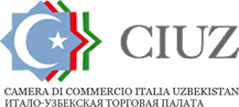 L’Uzbekistan si è posto un obiettivo molto ambizioso. La possibilità di aggiungerlo dipende largamente dalla politica degli investimenti nei settori chiavi dell’economia.
L’Uzbekistan si è posto un obiettivo molto ambizioso. La possibilità di aggiungerlo dipende largamente dalla politica degli investimenti nei settori chiavi dell’economia.
Investment flows in today’s global economy are a fairly unstable phenomenon. Today, the country can hit the top in foreign investment, and be challenged by a serious outflow of investment in a couple of days. This financial game, for it can not be called differently, has led many countries to serious economic glut and even stagnation. That is why Uzbekistan has gone the other way. The country did not bet on attracting speculative investments, but offered foreign partners a different model of developing relations – the establishment of joint projects and initiatives in which the government provides all the support to foreign funds.
The key task for the near future comes to holding tangible structural transformations and achievement of advanced growth of the industry, bringing its share in the GDP to 40% against 33.5% in 2015, while reducing the share of agriculture from 16.6 to 10.8%. However, the goal would be virtually unfeasible without foreign investment, expertise and technologies.
This year alone, $17.3 billion in investments is channeled into the development, modernization and structural changes with 9.3-percent growth, including more than $4 billion of foreign investments with 20.8 percent increase against 2015.
This is just the beginning. In the coming years, Uzbekistan will work out strategic development programs that will shape a radically new integrated approach to the development of various industries. For example, it is envisaged to build a clear development strategy for each promising kind of raw and semi-finished materials with high-potential, develop a specific program of deep processing for the next five, ten and fifteen years.
Fashion-Trend
The light industry of Uzbekistan can be truly ranked among major achievements of national independence. The country, whichsupplied the entire former Union with cotton 25 years ago, but almost did not manufacture finished textile products, is now exporting them to 55 countries of the world. The first export shipments date back in 1994. At that time, exports did not exceed $8 million. Last year, the cost of supplied goods to other countries exceeded $1 billion, the number of exporting companies – 250, which accounted for almost 90% of the total number of companies under O’zbekyengilsanoat.
Russia, Turkey, China, Kazakhstan and certain EU countries are the biggest importers of light industry of Uzbekistan.
Besides, the industry has exemplified a successful partnership with the world’s leading foreign companies and brands. It established direct business contacts with textile associations and headmost companies in Belgium, France, Germany, India, Italy, Malaysia, Singapore, USA, Switzerland, South Korea and other countries. Light industry has been among the country’s leaders in channeling investment, allowing the opening of new joint ventures and expanding the existing manufactures. Last year alone, the light industry of Uzbekistan attracted $187.3 million of investments. The indicator rose by 2.7% against the previous year.
The government has provided industry players with a broad range of privileges and preferences. For example, benefits of exemption from property tax were extended for textile workers until 2018. The significant amounts of saved funds are channeled for the further development and upgrade of enterprises.
Thirty-three new manufactures were launched in the industry last year, and over 12,000 jobs were created. Eighteen new industrial enterprises worth $99 million with an export potential of $43.1 million were commissioned on the threshold of the anniversary of the country’s independence. By Constitution Day, the company had completed the implementation of several investment projects with the launch of three textile enterprises.
O’zbekyengilsanoat has continued the implementation of the projects on decreasing energy consumption and introducing energy-saving technologies at enterprises. As a result, power consumption in the commercial output worth 1 billion soums (currency rates of CB RU from 20.06.2016, 1$= 2938.71 soums) fell by 6%, natural gas – by 9.8%.
By the end of 2019, Uzbekistan is planning to disburse more than $900 million of investments for the implementation of 77 projects in the textile industry. These funds will be invested in the establishment of vertically integrated textile complexes in various regions of the country, as well as creation of new and expansion of existing manufactures that cooperate with the world’s leaders in textile machinery. It is expected that projects will increase the industry capacity by more than twice.
The program for light industry development was launched last year. In the next five years, it is planned to commission more than 100 well equipped joint ventures apart from over 100 new enterprises with participation of investors from Germany, Switzerland, Japan, South Korea, the US, Turkeyand many other countries, which had been established in the country in the last three years alone.
Another interesting initiative: Uzbek companies intend to bring the number of their textile trade houses abroad to 70 by the end of the current year. To date, there are about 40 trade houses of Uzbek textile enterprises in the world, allowing the Uzbek manufacturers to pursue an effective policy of search for foreign partners and expanding exports. It is expected that opening of additional foreign textile houses will scale up external supplies of not just raw materials and semi-finished products, but finished products with high added value.
Tasty and healthy
Active investment policy has proved well in the food industrytoo, as evidenced by the launch of 108 investment projects in the industry worth $428.7 million at the beginning of this year alone.
By the end of 2020, the industry is planning to implement 180 projects for $596 million, aimed at the development of raw material base, intensification of enhanced processing of fruits and vegetables, meat and dairy products, the production and exports of food products. It is important that 74 of them will be funded by a total of over $163 million of direct foreign investments and loans of international financial institutions.
As part of revitalization of exports within five years, there are plans afooot to found 15 trade and logistics centers specializing in processing, storage and transportation of fresh and processed fruit and vegetable products with a total capacity of 60,000 tons. The projects should increase exports of these products by more than 2.7 times up to 1.5 million tons, as well as establish the production of nearly 200 items of new products.
The straightforward movement is based on partnership with foreign investors. The examples are right at the corner. A project on the establishment of the largest domesticconfectionery factory Lazzat is underway. The Hong Kong company Torutem Business Limited intends to invest in its modernization at least $5 million and set up several technologicalcaramel production lines. Its main objective is to launch modern facilities focused on export to Russia and other countries of the region, as well as to Southeast Asia. Investors took interest in convenient logistics, the benefits provided by the Uzbek government, large domestic market, and the opportunity of facilitated access to the CIS markets.
In the current year, investors are ready to invest in the development of production nearly $3 million. The project is scheduled for completion in 2017. After reaching full capacity, it will produce over 8,000 tons of candies annually.
The world-famous French company Danone promises to become another new food brand in the domestic market: it is currently negotiating on the opportunity of establishing a manufacture ofbaby food in Uzbekistan.
Uzbekistan intends to not just invite the world famous French manufacturer with its high-quality products, but empower its management, technologies and equipment to compete with local players, thereby making them to catch up in this segment of the market. This measure would build the desired market conditions and increase the competition.
In addition to Danone, the holding is considering the possibility of inviting other foreign companies operating under well-known brands to Uzbekistan. For instance, the O’Uzbekozikovkatholding company has recently made an agreement with the Golden Fruit Ltd on the establishment of a dried fruit confectionery production in our country.
The well-known brand of Coca-Cola has been actively increasing its investments in Uzbekistan as well. The plant in Tashkent has recently completed implementation of a big investment project on the modernization of production lines with equipment of the German company of Krones, which has increased the plant’s capacity by 1.5 times.
By the end of 2019, the company intends to invest a total of over $35 million in the development of its plants in Uzbekistan. There are currently three joint ventures of the well-known American manufacturer: in Tashkent, Urgench and Namangan. They produce six kinds of drinks in different packaging.
The decision on increasing the capacity of the plants was conditioned by the growing demand in the domestic market and good export prospects. Last year alone, Coca-Cola exported its products totaling $2.5million to neighboring countries. There are still plans afoot to increase the production volumes and produce new products. For example, it is considering the opportunity of producing juice and soft fizzy drinks in aluminum cans.
The other long-time partner of Uzbekistan – South Korea’s Lotte Confectionery – is also looking for an opportunity to build a confectionery factory.
It is planned to build the new plant in the Angren SIZ. The two sides are currently negotiating on business plans. Delegations of Korean specialists have paid several visits to Uzbekistan to conduct market research of wholesale and retail food trade networks in the country, and particularly in confectionery segment, learned about the feedstock capacity and other manufacturers. They also held talks with distributing companies on how to sell the products on the territory of Uzbekistan, and studied the capacity of the domestic confectionery market.
Fonte: Uzbekistan Today

